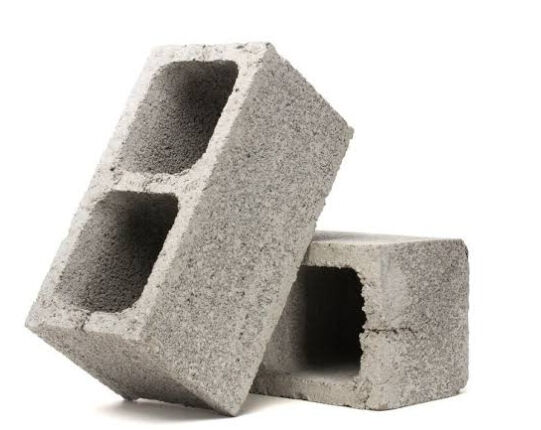By Enioluwa Adeniyi, NaijaNews
Calculating the number of blocks required for building construction involves several steps.
These calculations are based on standard block sizes and construction practices. Let’s use a simplified method to estimate the number of blocks you need.
This example uses a standard block size, typically 18 inches long, 6 inches wide, and 6 inches high in Nigeria. Remember, actual block sizes can vary, so adjust your calculations accordingly.
Steps to Calculate Number of Blocks
- Measure Wall Dimensions:
– Measure the length and height of the wall(s) you plan to build. For this example, let’s say you have a wall that is 30 feet long and 10 feet high.
- Calculate Wall Area:
– Multiply the length by the height to get the wall area in square feet.
– Wall Area = Length x Height = 30 feet x 10 feet = 300 square feet.
- Calculate Block Area:
– Convert the dimensions of a block from inches to feet (18 inches = 1.5 feet, 6 inches = 0.5 feet).
– Block Area = Length x Height = 1.5 feet x 0.5 feet = 0.75 square feet.
- Estimate Number of Blocks per Square Foot:
– Since each block covers an area of 0.75 square feet, you can estimate the required blocks per square foot of wall area.
– Blocks per Square Foot = 1 / Block Area = 1 / 0.75 = approximately 1.33 blocks.
- Calculate Total Number of Blocks:
– Multiply the total wall area by the number of blocks per square foot.
– Total Number of Blocks = Wall Area x Blocks per Square Foot = 300 square feet x 1.33 = 399 blocks.
- Consider Mortar and Wastage:
– It’s advisable to add an extra 5-10% of blocks to account for breakage, wastage, and cuts. For higher accuracy, especially for complex projects, considering 10% is safer.
– Additional Blocks = Total Number of Blocks x 10% = 399 x 0.1 = approximately 40 blocks.
- Final Estimate:
– Add the additional blocks to your total.
– Final Estimated Number of Blocks = 399 + 40 = 439 blocks.
For a 30-foot-long and 10-foot-high wall, you would need approximately 439 blocks, considering a 10% allowance for wastage and mortar joints.
Remember, this is a basic calculation, and actual requirements can vary based on block size, mortar thickness, openings (like doors and windows), and specific construction methods. Always consult with a professional for precise estimates.

